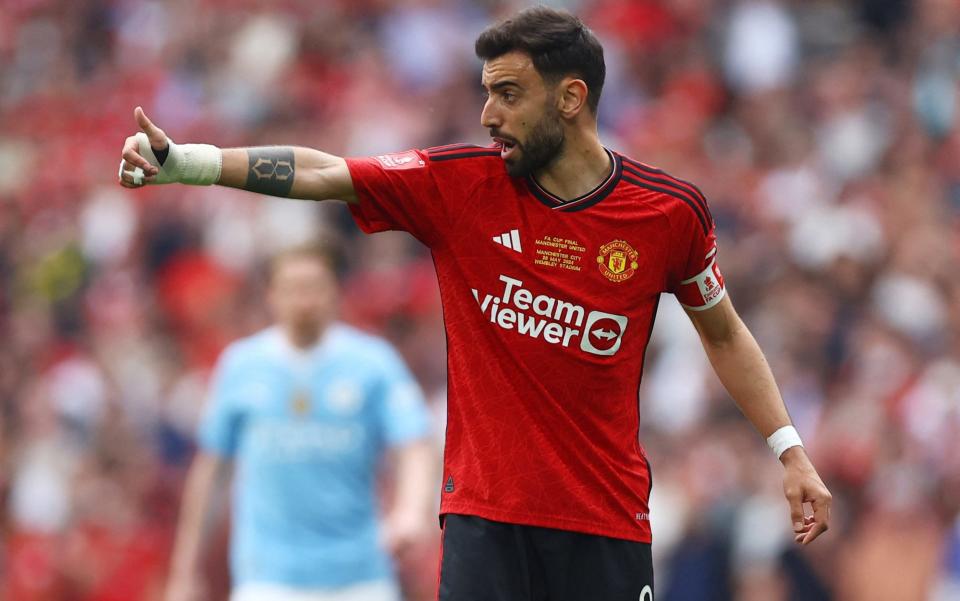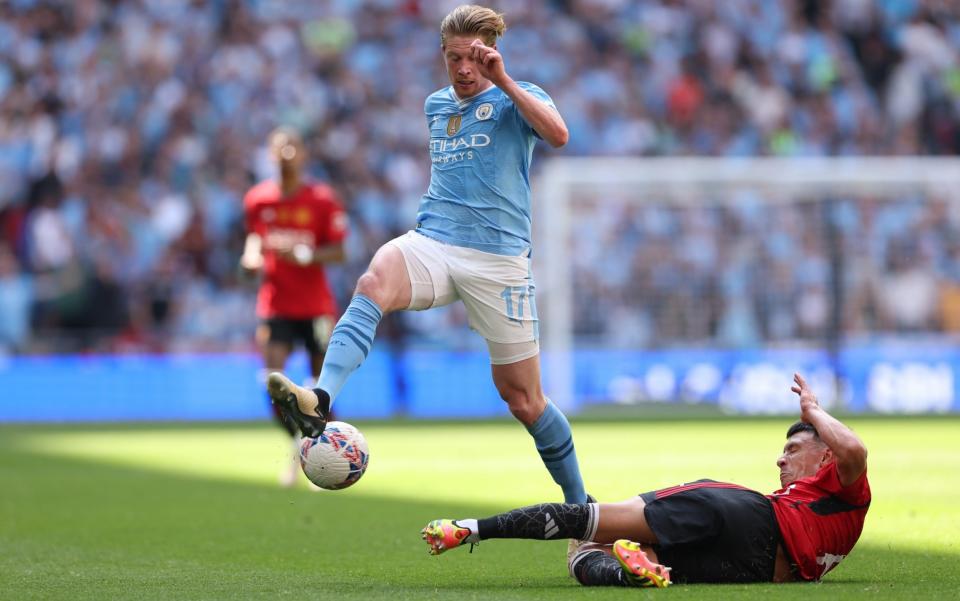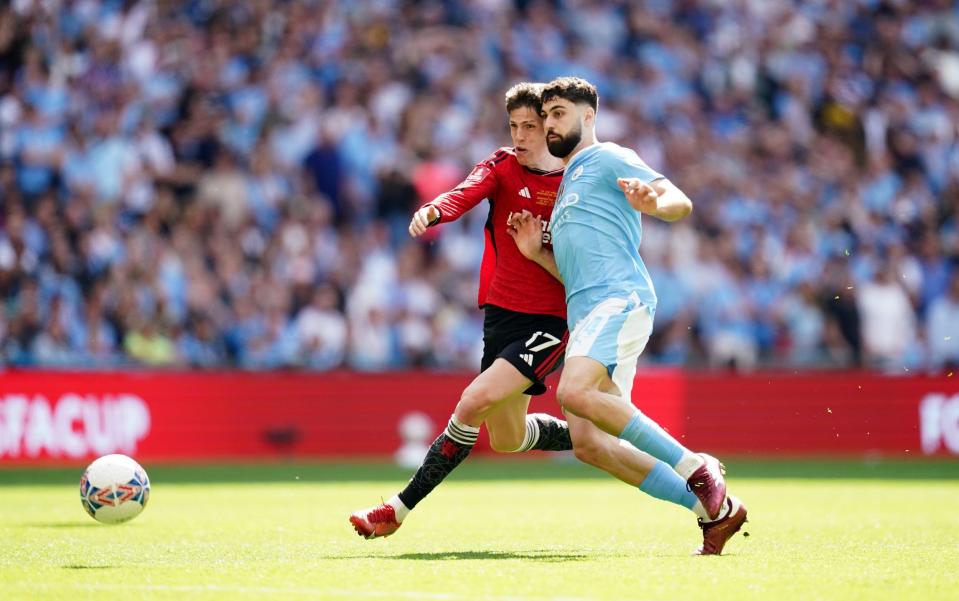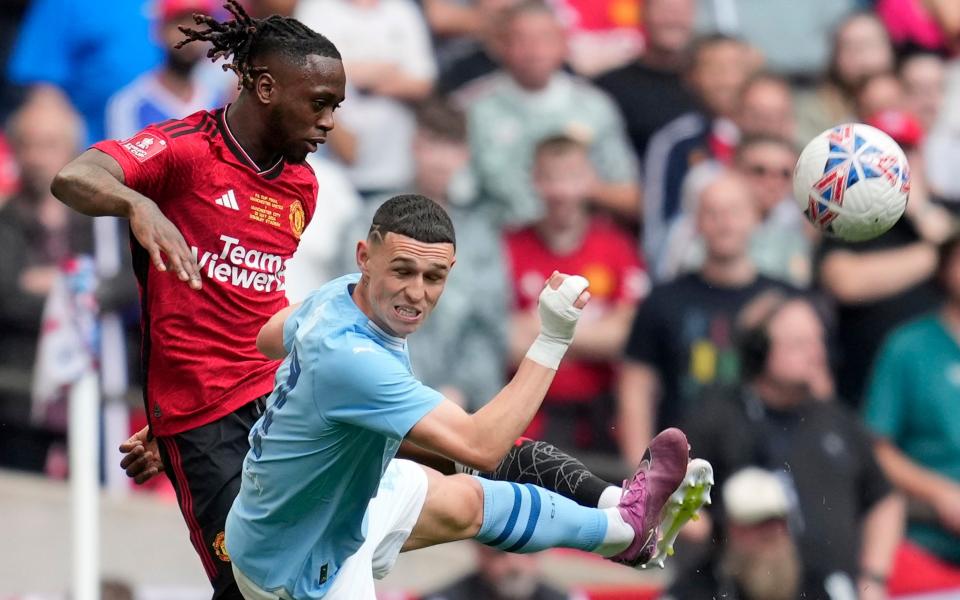Manchester United were huge underdogs against rivals Manchester City, but Erik ten Hag’s tactics worked perfectly as sealed a surprising 2-1 victory. See how the Dutchman did it and the goals that sealed the victory – one of them thanks to a City error, the other, an excellent quality play.
Using a ‘false nine’


Ten Hag made the decision to leave Rasmus Hojlund out and deploy Bruno Fernandes as a ‘false nine’, knowing that his captain was also intelligent enough to step forward and join the attack. It was difficult for Hojlund, who has the speed and physicality to trouble Manchester City, but Fernandes’ passing ability would be crucial. As is his tactical intelligence. Using him there meant he could drop into midfield and prevent Rodri from dictating play, while Fernandes is so eager to work that he would be able to succeed in this demanding role. Scott McTominay also played his part in the work rate as he tried to get closer to Fernandes.
rope-a-dope


Key to Manchester United’s approach was Lisandro Martinez. Without the Argentine in the center of defense, they would not be able to take pressure from Manchester City. They knew City would dominate possession no matter what and they had to accept that. But Martinez made the difference and gave the defense much more security, which also relieved Raphael Varane, who didn’t need to attack the ball. This meant they could defend in a low block and limit the space City could find behind them. It also meant that City often played ahead of United and were unable to dislodge them from position.
Flying wingers


Nothing threatens like rhythm. United have that in abundance with Marcus Rashford and – especially – Alejandro Garnacho, and it was their biggest weapon. Although Kyle Walker is quicker than both on the right flank, City were much more vulnerable on the left flank. Josko Gvardiol performed well in his first season at City, but he is fundamentally a defender playing out of position at left-back and was exposed by Garnacho, who stayed high and wide and tried to run behind him. Gvardiol’s instinct is to drop back and, as City press, he leaves space for United to attack with long balls.
Working sides


Both Diogo Dalot – who helped create United’s second goal – and Aaron Wan-Bissaka were asked to work hard. Their main role was to defend, of course, but they both also took turns coming into midfield and creating an extra man for United as City started in their 4-1-4-1 formation. Wan-Bissaka made a smart move for the second goal. Dalot also made a difference and even advanced beyond Fernandes, while Kobbie Mainoo had the discipline to ‘stay seated’ when necessary. Alongside him, it was Sofyan Amrabat’s best – and ironically probably last – game for United
First goal: a defensive horror show
Manchester United were brilliant that day, but there was no doubt that they had a big hand in the first goal, scored by Garnacho.
Here’s how it all unfolded…
First stage: loose pass from Rodri
The player who completed more passes into the final third than any Premier League player last season has missed the radar. It was a moment of sloppiness that characterized City’s first-half performance, with Phil Foden also passing the ball for a goal kick when he had time and space. Record this alongside Patrick Vieira giving the ball away in the build-up to Ryan Giggs’ famous winner in the 1999 FA Cup semi-final replay, which United fans sing about to this day.
Second phase: City’s offside line violated
Long attacking throws were a feature of United’s first-half performance and in this case City neither dropped back to cover the run nor efficiently advanced to catch Garnacho offside. Of course VAR checked after the goal was scored, but John Stones was too deep and Garnacho was on the pitch. It was a decent diagonal pass from Dalot, a right-handed player who started at left-back.
Stage three: Ortega runs away
City fans will have had that horrible sinking feeling the moment Stefan Ortega left his goal. He was never the favorite to get there and ended up venturing a meter or two outside his box. Even if Gvardiol had headed it back to him, Ortega would not have been able to use his hands. Any handball would have resulted in a red card, adding to the sense of panic. Sweeping behind a high line is a key skill for a City goalkeeper, but this is how it can go wrong.
Stage Four: Unwanted Assistance from Gvardiol
Gvardiol does what every good defender should do and puts himself between Garnacho and the ball. As the bigger man, he really should have controlled the duel and got the United winger out of the way. Perhaps surprised to see his goalkeeper running towards him, Gvardiol makes a quick decision to try and head back. He should have headed the ball towards the corner flag rather than straight into the goal.
Second goal: one of the greats of the FA Cup final
If the first goal was fortunate, the second was sublime, with Mainoo scoring after a sweeping move from one end of the field to the other.
That’s how it happened…
Phase one: United clear their lines
City looked like they could respond quickly to the shock of falling behind, but Martinez was vital for them at the back, and he did well to intercept a City cross and direct the ball towards Mainoo. The teenage midfielder showed typical calmness to collect the ball and feed Fernandes. The captain then exchanges passes with Mainoo before passing the ball to Rashford.
Stage Two: The Game Changer
Rashford has endured a difficult season but chose his pass perfectly here, brilliantly slotting a through ball past Garnacho. The Argentine picked up the ball before advancing into the box and playing centrally.
Third stage: Bruno’s moment of genius
Fernandes continued to run around the field, constantly examining where his teammates and defenders were if the ball reached him. The ball actually reached the Portuguese and, with plenty of space, it seemed certain that they would shoot. Fernandes, however, had other ideas, playing a wonderfully disguised pass to Mainoo, who also covered a lot of ground to get into the box.
Stage Four: The Perfect Finish
Mainoo is just 19 years old, but you would never have guessed it from his finish. The local boy opened his body and shot past Ortega and into the corner, sealing an absolutely brilliant goal.








































